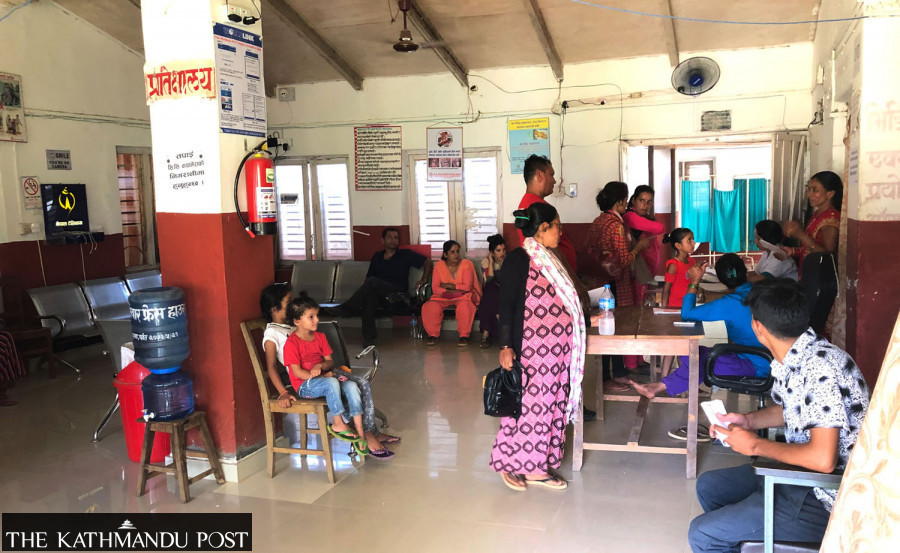Editorial
Next come diseases
We should proactively allocate human, infrastructural and budgetary resources to combat monsoon-time maladies.
As much as we love the monsoon for its greenery and promise of a bountiful harvest, we dread floods, landslides and diseases. As in years past, disasters have wreaked havoc in several parts of Nepal this year too, leading to at least 70 deaths since June. Adding to the woes are vector- and water-borne diseases, such as viral fever, diarrhoea, dysentery, food poisoning, typhoid, dengue and kala-azar, turning the season into a time of epidemics. The Epidemiology and Disease Control Division has already warned doctors and the public of possible uptick in incidents of these diseases.
In 2022, as a result of contaminated water, Kathmandu Valley saw an outbreak of cholera, with 77 positive cases reported. The same year, diarrheal diseases affected hundreds of people for many months. Just last month, a patient tested positive for the Vibrio cholerae 01 Ogawa serotype at the Sukraraj Tropical and Infectious Disease Hospital, of which the authorities were reportedly unaware, as per a Post report. This is not a good sign, as many cases usually go unreported because people don’t visit hospitals unless there’s an emergency, and a lack of investigation from the government means no awareness about the possible spread of cholera. Such negligence about a deadly disease will only fuel its spread.
Moreover, the dengue outbreak in the country has gone out of hand over the years. According to official records, the virus has circulated to 73 districts, infecting almost 1,500 people since January. What is concerning is that these numbers could go up, as we aren’t even halfway through this monsoon, and the dengue virus lasts until post-monsoon. Additionally, climate change and rising temperatures have pushed the disease even into the winter season. Recently, health experts have also been worried about the possible instances of the Zika virus (similar to dengue) in Nepal, as cases are being detected in the southern neighbour India.
The outbreaks of these diseases and their prolonged presence can easily drain the healthcare facilities of an under-resourced country like ours. In the monsoon crisis, the poor and vulnerable suffer the most, as their condition is compounded by contaminated water, floods, landslides, and other monsoon-related disasters. This not only affects their treatment-seeking behaviour but also their ability to adopt preventive measures, which could in turn lead to community-level transmission of diseases.
The Epidemic and Outbreak Surveillance of the Ministry of Health is tasked with collecting data on diseases, informing the general public, and encouraging policymakers to take necessary actions against outbreaks and make people aware of them. Moreover, it also regularly monitors drinking water quality and does surveillance of water-borne diseases. In recent months, it has found harmful substances like faecal coliform in bottled water and even tap water in some places in the Kathmandu Valley. These findings suggest the surveillance and monitoring mechanism in the country has to be strengthened, and local units around the country should be made responsible for keeping their water resources safe throughout the year, especially during the monsoon, to prevent possible outbreaks of water-borne diseases. In the case of vector-borne dengue, Zika and chikungunya viruses, a year-round door-to-door search and destruction of mosquito breeding areas is a must.
Nepal has been dealing with monsoon maladies for decades. Our healthcare system should proactively allocate human, infrastructural and budgetary resources to combat these monsoon epidemics and prevent unnecessary loss of life and a whole lot of suffering.




 18.12°C Kathmandu
18.12°C Kathmandu














